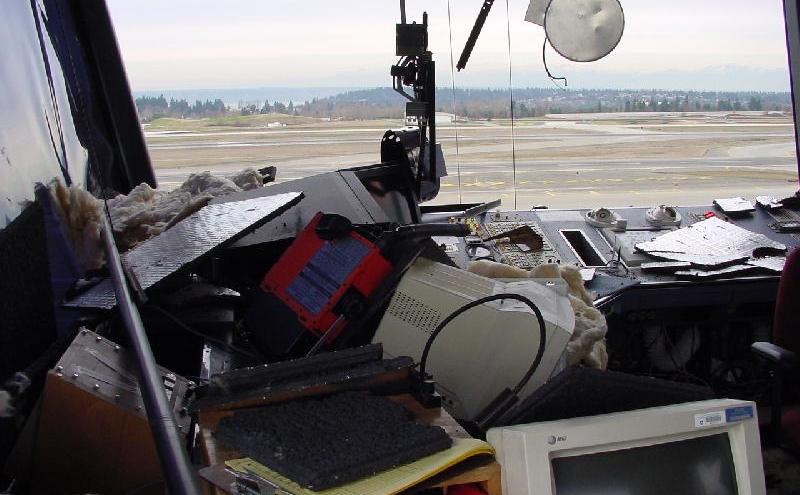
My high school teacher once told me that you’ll always remember exactly what you were doing and where you were at the moment something big happened. That’s held true for me for events like the day President Reagan was shot, September 11, and the 2001 Nisqually earthquake.
Although the 6.8 earthquake happened 20 years ago at 10:54 a.m. on Wednesday, February 28, 2001, in some ways it seems like yesterday. My most vivid memory — besides terror — was feeling totally unprepared.
Although I was born in Seattle, growing up on the East Coast was not good practice for “what to do in case of an earthquake.” When the sky turns a funny color before a hurricane, no problem … I got this. I’d been through a few small tremors since moving back to Seattle, but big ones like the Nisqually were a whole different story.
The new three-story office building was built to move, and it shimmied for what seemed like an eternity. It felt like somebody just shook a giant rug outside with the city on top of it. In actuality, it was a little under a minute that I watched cracks run through the drywall above the big glass window and heard the metal structure of the building groaning and grinding. And considered whether it was safer to stay where I stood in the doorway or run down the stairs like my colleagues.
Although memorable, my experience was tame compared to other buildings and experiences in the region. Building bricks in Pioneer Square burying a vehicle parked outside. My friend watching the ribbon of I-5 shift and twist sideways under him as he drove north. And the shattered windows and damage inside the air traffic control tower at Seattle-Tacoma International Airport (SEA). This did not bode well for my 6:00 a.m. flight out the next morning.
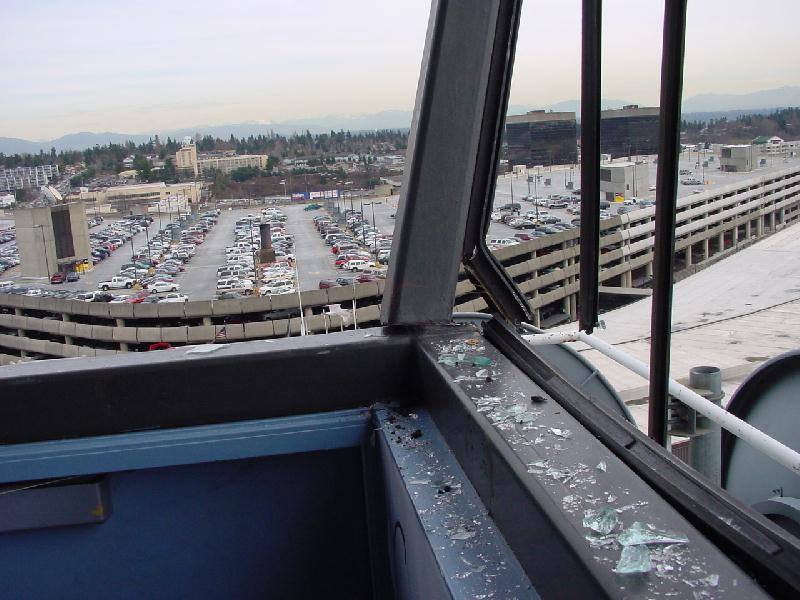
To my surprise, not everyone in the region was as badly prepared as I. The airport was quickly up and running and there was no way I was getting out of the early morning departure to a client meeting, regardless of how freaked out I was. Within 36 minutes of the tower closure, the FAA was directing air traffic from a temporary structure, and flights were taking off and landing, and SEA Airport was operating. By Saturday morning, there was a temporary control center constructed from a trailer on top of a shipping container with a good view of airport operations.
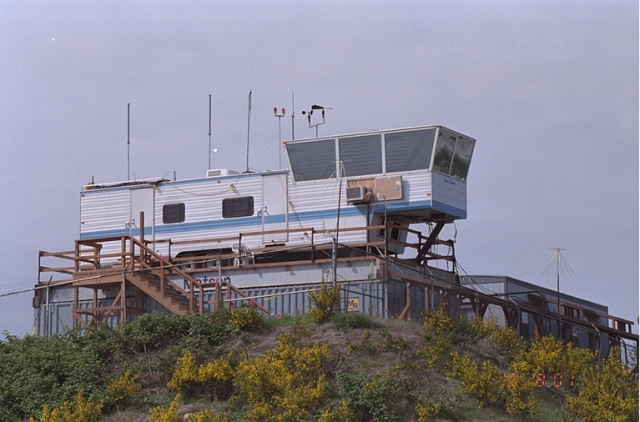
My frayed nerves were not ready to board that plane, but that’s another story for another day. What’s far more fascinating are these stories:
- Seattle Times “'The tower is collapsing': Temblor forces Sea-Tac's air-traffic controllers into trailer," 2001
- Los Angeles Times "Seattle’s Air Traffic Controllers Wing It — Atop a Shipping Container," 2001
Seismic improvements before Nisqually
One reason for the airport’s resilience was that at the time of the 2001 quake, the airport was in the middle of a major seismic improvement project.
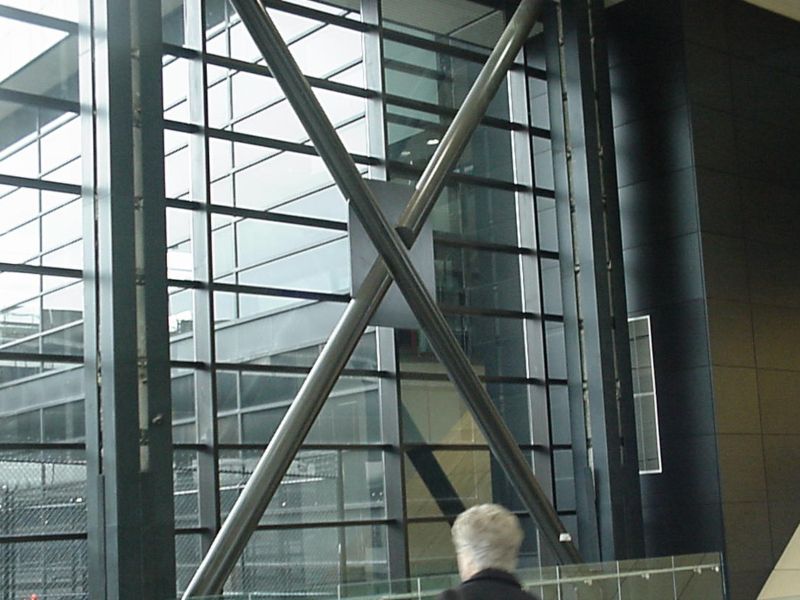
FAA Control Tower and Central Terminal
At the time of the Nisqually quake, seismic reinforcements to the oldest part of the main terminal, the 1947 Administrator building, had been completed several years earlier and the Central Terminal was under construction.
Although the FAA control tower was damaged, this Central Terminal construction is one reason that the tower didn’t fare worse. After the Nisqually quake, the tower was retrofitted with new structural improvements and tied back through the structure of what is now the Central Terminal.
That work is complete, and you can see many of the structural cross braces angled between columns throughout the building. These improvements were anchored to the foundations of the building and are the reason that some of the columns just past Checkpoint 3 are larger than their neighbors. It is now the ramp control tower.
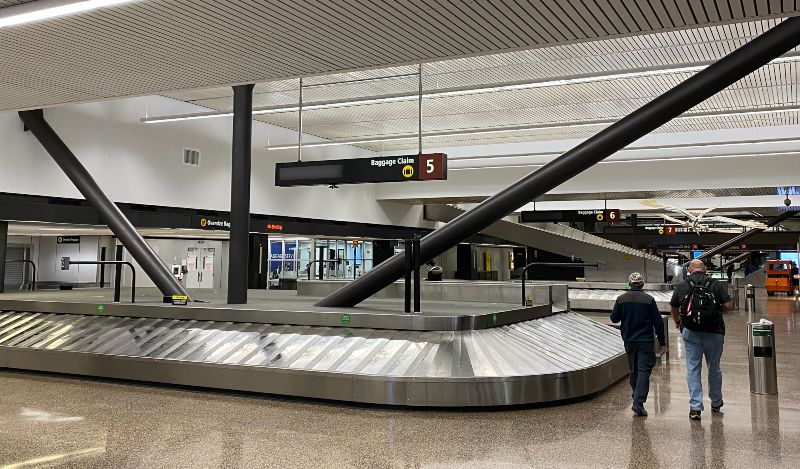
Seismic improvements since 2001
There’s been a great deal of construction in the last 20 years, and all new construction at the airport has included building earthquake-resistant structures required by current building codes. Here are a few highlights of recent projects:
Service tunnel renewal project
The service tunnel and central loading dock underneath the arrivals area were strengthened to withstand the magnitude of an earthquake with the probability of occurrence once every 475 years. In other words, a large seismic event. This effort also included widening the seismic gap between the Main Garage, service tunnel/load dock, and Main Terminal to meet current requirements so that these facilities do not bang into each other during an earthquake.
• Budget: $36 million
• Status: Completed in 2020
North Satellite reinforcement
The North Satellite was built almost 50 years ago, so it needed seismic upgrades and structural reinforcement to comply with current building codes. The North STS station was also upgraded to improve safety in an earthquake.
Coined by the North Satellite project team, the term "seismic hug" is used to describe this unique approach taken to reinforce the satellite facility by building around it. Like a weightlifting belt provides support and stability to a bodybuilder, a new steel structure has been constructed around the perimeter of the existing terminal building. Known as a steel moment frame, this new structural system is made up of columns and beams that connect to concrete pilings anchored in the ground for a solid foundation and seismic retrofit of the middle-aged building.
• Budget: $19 million in 2016-2017 budget for seismic upgrades
• Status: In progress
• Read more

Auxiliary power facility
What if the airport loses all power? SEA Airport is prepared for that. In 2018 we completed a new Alternate Utility Facility that will provide 100 percent backup power within five minutes of an unexpected loss of normal utility power. The continued reliable operation of SEA Airport is vital to meeting the needs of the region and the airlines.
- Budget: $36 million
- Status: Completed in 2018
South Satellite
Structural upgrades in the South Satellite were needed before the upcoming renovation and renewal project that includes seismic upgrades to align with current code requirements. These upgrades will include external seismic reinforcement towers.
- Budget: $3 million for structural upgrades, seismic upgrade budget in development
- Status: Structural upgrades completed in 2019; seismic work in planning
To date, SEA Airport has finished or planned around $50 million in seismic upgrades to the airport structure and infrastructure. And even if some of us are not as well prepared for the next event as we should be, it’s a relief that SEA Airport has been thinking about it and doing all it can to get ready.
And that’s a great example for all of us to follow.
P.S. Here’s a friendly reminder to get your earthquake kit up to date and easily accessible!







